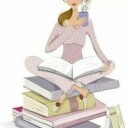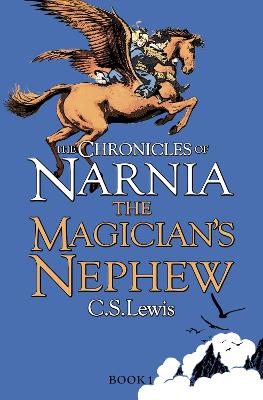
A beautiful paperback edition of The Magician’s Nephew, book one in the classic fantasy series, The Chronicles of Narnia. This edition is complete with cover and interior art by the original illustrator, Pauline Baynes.
On a daring quest to save a life, two friends are hurled into another world, where an evil sorceress seeks to enslave them. But then the lion Aslan’s song weaves itself into the fabric of a new land, a land that will be known as Narnia. And in Narnia, all things are possible.
The Magician’s Nephew is the first book in C. S. Lewis’s classic fantasy series, The Chronicles of Narnia, which has captivated readers of all ages for over sixty years. This is a stand-alone novel, but if you would like to journey through the wardrobe and back to Narnia, read The Lion, the Witch and the Wardrobe, the second book in The Chronicles of Narnia.
- ISBN13 9780007323135
- Publish Date 1 October 2009 (first published December 1955)
- Publish Status Out of Print
- Out of Print 15 August 2023
- Publish Country GB
- Publisher HarperCollins Publishers Inc
- Imprint HarperCollins
- Format Paperback
- Pages 224
- Language English
- URL http://harpercollins.co.uk
Reviews


mitabird

Danielle Renee Wallace

zooloo1983

flybymoonlight
I did enjoying learning about the beginning of Narnia and where the lamppost came from. All in all, this book was okay.

Briana @ Pages Unbound
Re-reading has slowly changed my opinion. In the first place, I have grown to believe that watching a world come into being is interesting after all. There is the obvious enjoyment that readers learn a few fun facts from this book, such as where the lamppost and the White Witch in The Lion, the Witch, and the Wardrobe originate, but there is also a more subtle pleasure to be had in watching Aslan bring Narnia to life. The connections between Aslan and God are fairly obvious here; he is the Creator, he is both terrifying and wonderful, and he knows everything about you. Watching Lewis’s imagining of how a Creator might operate is fascinating. The Magician’s Nephew, then, is a bit more about the experience of art and creation than about an exciting plot.
Nonetheless, the book does have entertaining moments. Digory’s Uncle Andrew is a schemer with no backbone to support his plans, and it gets him into some hilarious situations when he must interact with people of stronger personalities. Likewise, the Talking Animals Aslan creates get into lots of scrapes while exploring the new world around them. And, yes, there is the rampaging evil Sorceress. While these moments have never struck me as comprising the bulk of the book, they do add lots of life and fun.
Finally, this is Narnia and it is Christian allegory, so of course there are moral lessons. However, Lewis manages to incorporate them into the plot; it is Digory learning the lessons, and then the reader tangentially, so it never sounds preachy. As a child, I never felt Lewis was talking down to me or purposely trying to instruct me from his vantage as a wise adult, and I never get that sense from re-reading.
The Magician’s Nephew is a quieter book than some of the other Chronicles, but it is imaginative and ultimately charming. It also helps complete the circle of Narnia’s existence by presenting its origin, and I think portraying a world from start to finish is a beautiful concept for a series.

boghunden
Jeg var super begejstret allerede fra første side. Der hersker ingen tvivl om, at det her er en børnebog, men det betyder jo bare, at der sker en hel masse på hver eneste side. Den første Narnia fortælling er sprængfyldt med handling. Det var på ingen måde, hvad jeg forventede. Det var så meget mere. Jeg havde en del forventninger, og alle blev de indfriet. Det er en fortælling, der indeholder de klassiske temaer fra børnebøger; venskaber, hvordan man behandler andre, at tro på sig selv. Alligevel blev jeg helt varm om hjertet af at læse om det.
Sprogligt befinder vi os på et niveau, hvor alle kan være med. Det var medvirkende til, at jeg elskede bogen så meget. Der var lige et par gange hen mod slutningen, hvor jeg synes beskrivelserne tog overhånd og blev lige lange nok, men ellers var der ingen problemer.
Karaktererne. Åh, hvad kan jeg sige. Polly var da bare helt fantastisk! Jeg kunne se hende for mig, med sine lyse fletninger og fine prinsessekjole. Og Digory i smækbukser og med den der typiske “jeg kan det hele”-drenge attitude. Jeg kunne se for mig, hvilke narrestreger de to sammen kunne finde på og er bare glad for, jeg ikke er deres barnepige. Jeg fik lyst til at lære dem endnu bedre at kende. Samtidig var de voksne karakterer beskrevet som et barn ser dem (tror jeg…) og det gav bogen den humor, jeg også synes den har.
Alt i alt er jeg i hvert fald begejstret og der skal ikke herske nogen tvivl om, hvilke bøger mine egne børn skal have læst højt når den tid kommer ;)

clq

Whitney @ First Impressions Reviews
Now a brief on the principal characters, Digory, who pops up again as a wise old soul Professor Kirke and his friend Polly Plummer are like an old married couple. Constantly bickering and nagging each other and actually reminded me of Ron Weasley and Hermione Granger, two good friends there for each other through thick and thin but fighting along the way.
Did anyone watch the Strawberry Shortcake cartoon in the 80s? The "evil-doer" was The Purple Pieman who would have liked to have turned Huckleberry Pie actually into a pie. Anyway, he was tall and gangly and wore a crooked chef's hat, I kept picturing Uncle Andrew as such. Uncle Andrew looked (and was) devilish and conniving but when actually faced with danger himself became an old scaredy cat and made a run for the liquor bottle. Jadis was just pure evil and the contrast between Aslan, who is all that is good and her wickedness was a perfect blend.
Some may say that reading this first takes away some of the mystery in The Lion, the Witch and the Wardrobe as you learn of the existence of the wardrobe and lamppost but I disagree, I felt it only gave the reader a better understanding of the world of Narnia and eagerness to move further in the fantasy land.

celinenyx
The story begins in London around 1900. Two children, Digory Kirke and Polly Plummer, meet while playing in the adjacent gardens of a row of terraced houses. They decide to explore an attic connecting the houses, but take the wrong door and surprise Digory's Uncle Andrew in his study.
The evil Uncle Andrew then sends Polly to a different world, and forces Digory to go after her. This is the beginning of a series of adventures caused by Magic.
I kind of thought this book to be quite slow for a children's book. Maybe it's because I had the wrong idea when I started reading, but I wouldn't read this book first. It is more about explaining where the Witch comes from and how Narnia took shape than that it's an enjoyable stand alone story. It takes way too long before we finally arrive in Narnia, and when we do, we see more of the environment (which is quite okay) than of the inhabitants (which are way more interesting). This book did have some brilliant moments (like planting the Uncle.. I actually giggled at that part), and I didn't found the Christian references troublesome at all. They gave the story a nice classic mythological touch that I liked. And of course, in the end, everything works out. (Except for the Witch problem, we still need her in the next book).
It has potential, and I hope The Lion, the Witch and the Wardrobe proves to be the real classic it is labelled as.
